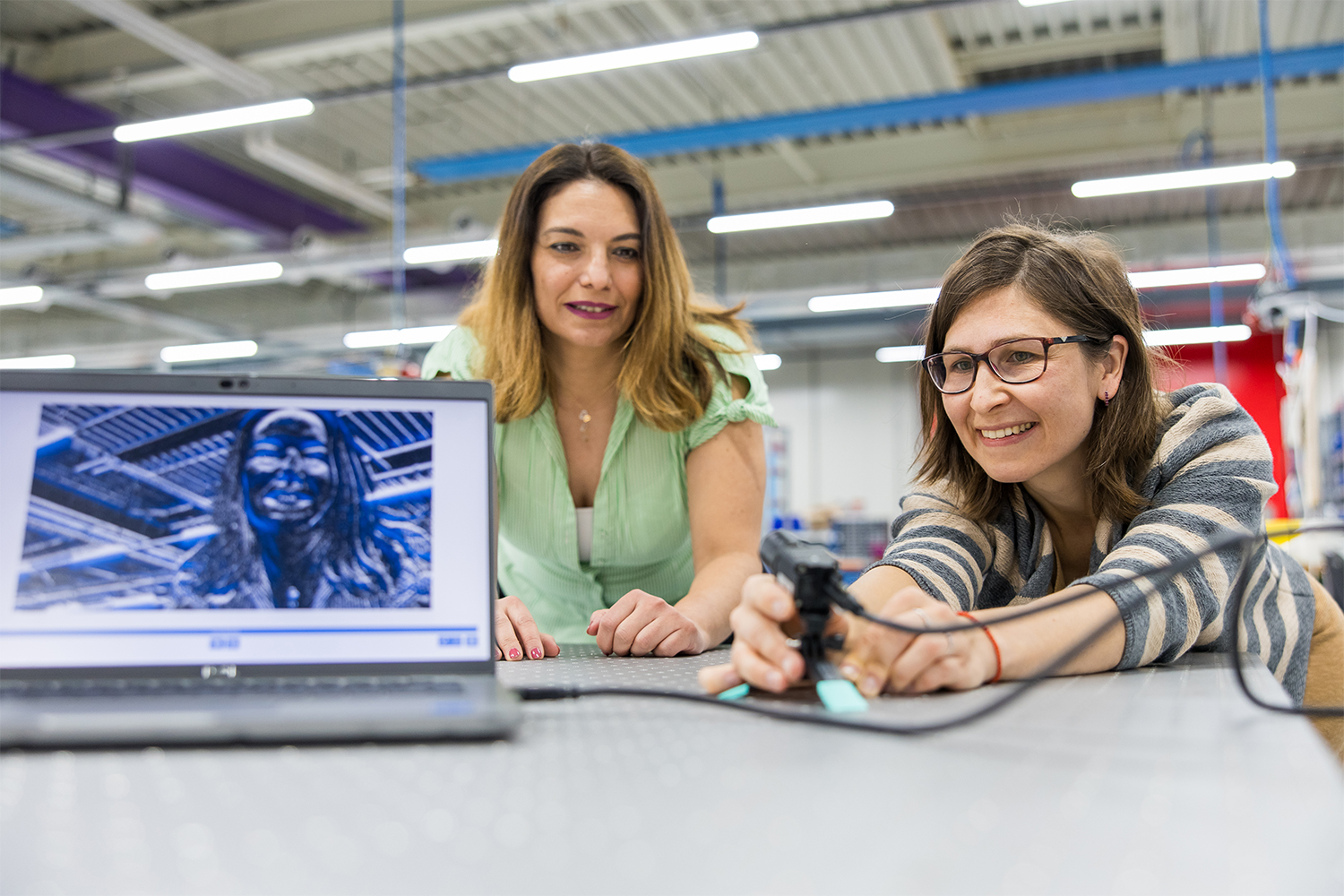A revolution is taking place in the world of imaging. Traditional cameras have proven their worth over decades, in all sorts of products and production processes. However, there is a new kid on the block: the event camera. This captures changes in pixels with a time resolution of one microsecond. The promise of this new technology is immense. Sioux is already bringing it to market; the possibilities are extraordinary.
There are many types of cameras, each with their own specific features and applications. For instance, RGB cameras are used in smartphones and security systems. Depth cameras create a 3D representation of products and environments. Thermal cameras are employed for industrial inspection and fever detection, machine vision cameras for pattern recognition and quality control, and multi-spectral cameras for material research…
Radically different
‘What all these traditional cameras have in common is that they capture full frames at specific moments in time,’ says Elif Tasel, System Architect at Sioux. ‘The event camera is new and works in a radically different way. It does not take a picture or a series of pictures per second, but responds to so-called events - it registers changes in light intensity at individual pixels, for example due to movement. Only the information from that single pixel is transmitted from the camera to the computer. In this way, its operation closely resembles that of our eyes and brains, which strongly react to changes in our environment.’
Asynchronous perception
The development of event cameras has been underway for quite some time - about 40 years. The first principles of asynchronous perception were explored using neuromorphic engineering, which mimics the functioning of the human retina - the light-sensitive layer at the back inside the eye. In the first decade of this century, the first prototypes of working silicon retina emerged. This technology has now entered a new phase.
Industrialized product
Tasel: ‘In February 2025, the first true event camera came to market, manufactured by IDS based on a sensor from Prophesee, which is produced by Sony. This is not a beta version or an evaluation kit for scientists, but an industrialized product. It marks the start of commercial rollout and application. Sioux is one of the frontrunners in this area. We are already bringing this technology, previously unknown and unavailable, to market. This allows us to help our customers push their technological boundaries further.’
Sparse data
Event cameras enable improved real-time analysis with sparse data; after all, they generate information at lightning speed by only highlighting changing pixels. The discrete nature of these events, however, also demands a new approach to efficient data processing - one that differs from traditional full-frame-based computer vision. A combination with spiking neural networks, which directly model the spiking behaviour of biological neurons and are regarded as the next generation of artificial neural networks, may be particularly well-suited for directly processing event data.
Dynamic range
Oksana Manyuhina, Principal Mathware Designer at Sioux, points out several major advantages of using event cameras. ‘Because events have a precise timestamp with microsecond accuracy, fast motion can be compensated to avoid blur and keep details sharp. They also have a high dynamic range, and can measure details in dark and light areas of an image very precisely thanks to pixel response. They therefore work well in darkness, but also in situations where a blinding plasma is created using a laser. Moreover, they are energy-efficient and far cheaper than high-speed cameras.’
Future roadmap
Event cameras open the door to new measurement techniques; they can lead to greater efficiency, speed, and accuracy of products and production processes. What makes Sioux a specialist in this field? Manyuhina and Tasel first cite the unique character of the company. Sioux not only works on concrete assignments, but also conducts research; it comes up with innovative ideas, develops new knowledge, pushes technological boundaries, and makes them a reality for customers. In doing so, it looks not only at today’s needs, but also at the future roadmap. They also highlight the company’s multidisciplinary nature: bringing together mathware, software, electronics, optics, and mechanics in integrated development.
All together
‘From that very DNA, Sioux has been exploring the possibilities offered by event cameras for some time,’ says Manyuhina. ‘We investigated and created new mathematical frameworks and algorithms for processing event streams. We implemented these in software - including spiking neural networks that process signals from event cameras - on edge devices and advanced optical setups to optimize event generation. By combining these advanced algorithms with specialized hardware - field-programmable gate arrays (FPGAs) and potentially neuromorphic chips - we can achieve low energy consumption, and even greater processing speeds. We do this all together, which allows us to get the most out of it while progressing rapidly.’
Real-time inspection
At Sioux, various projects are underway in the field of event cameras, such as real-time inspection and monitoring of objects on a microscopic scale, moving or illuminated under laser light. Such a system has already been accepted by a customer who manufactures 3D foils with complex structures. Tasel: ‘No one has ever done this before, at any scale. This is usually carried out afterwards with a microscope in a static environment.’ Sioux also conducted research into recording mechanical vibrations of metal plates during a production process, aimed at predictive maintenance.
Unprecedented
Manyuhina: ‘And more projects are on the way; possibly in particle and object detection, or plume and fluid monitoring, for instance. The possibilities of event cameras - in the hands of professionals – are unprecedented; spiking neural networks, motion compensation, 3D shape reconstruction, vibration analysis, precise localisation… We are already applying these, exploring the opportunities, and promoting event cameras to customers who are unfamiliar with or sceptical about them. We do not just opt for the obvious applications, but also think outside the box, pushing this technology and its applications to their limits.’
